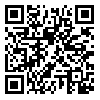1. 19. مولودی ر, نونهال س, سامان, دادخواه ا, دادخواه ا. کفایت روان سنجی نسخه ی فارسی مقیاس تمایل به عضلانی بودن در ورزشکاران مرد رشته ی پرورش اندام شهرستان گرگان. فصلنامه علمی-پژوهشی روشها و مدلهای روانشناختی. 2012;2:15-26.
2. Biddle SJ, Mutrie N. Psychology of physical activity: Determinants, well-being and interventions: Routledge; 2007. [
DOI:10.4324/9780203019320]
3. Shafabakhsh SR, Shafizadeh M, Dehkhoda MR. Effects of training and Fitness Education on the Health-Related Physical Fitness Factors in Adolescent Students: Evaluating the Mediating Role of Knowledge and Internal Motivation. Journal of Research in Sport Management & Motor Behavior. 2012;2(3):1-14.
4. Farrokhi A, Aghasi Brojeni S, Motesharee E, Farahani A. The Relationship and Comparison between Perfectionism andMood States of Team and Individual Sports Athletes. Journal of Research in Sport Management & Motor Behavior. 2012;2(3):111-23.
5. Hausenblas HA, Downs DS. How much is too much? The development and validation of the exercise dependence scale. Psychology and Health. 2002;17(4):387-404. [
DOI:10.1080/0887044022000004894]
6. Pasman L, Thompson JK. Body image and eating disturbance in obligatory runners, obligatory weightlifters, and sedentary individuals. International Journal of Eating Disorders. 1988;7(6):759-69.
https://doi.org/10.1002/1098-108X(198811)7:6<759::AID-EAT2260070605>3.0.CO;2-G [
DOI:10.1002/1098-108X(198811)7:63.0.CO;2-G]
7. Davis C, Brewer H, Ratusny D. Behavioral frequency and psychological commitment: Necessary concepts in the study of excessive exercising. Journal of behavioral medicine. 1993;16(6):611-28. [
DOI:10.1007/BF00844722]
8. Ogden J, Veale D, Summers Z. The development and validation of the Exercise Dependence Questionnaire. Addiction Research & Theory. 1997;5(4):343-55. [
DOI:10.3109/16066359709004348]
9. Downs DS, Hausenblas HA, Nigg CR. Factorial validity and psychometric examination of the exercise dependence scale-revised. Measurement in physical education and exercise science. 2004;8(4):183-201. [
DOI:10.1207/s15327841mpee0804_1]
10. Allegre B, Therme P. [Confirmative study of a French version of the Exercise Dependence Scale-revised with a French population]. L'Encephale. 2008;34(5):490-5. [
DOI:10.1016/j.encep.2007.08.004]
11. Müller A, Claes L, Smits D, Gefeller O, Hilbert A, Herberg A, et al. Validation of the German version of the exercise dependence scale. European Journal of Psychological Assessment. 2013. [
DOI:10.1037/t23583-000]
12. Parastatidou IS, Doganis G, Theodorakis Y, Vlachopoulos SP. Addicted to exercise: Psychometric properties of the Exercise Dependence Scale-Revised in a sample of Greek exercise participants. European Journal of Psychological Assessment. 2012;28(1):3-10. [
DOI:10.1027/1015-5759/a000084]
13. Sicilia Á, González-Cutre D. Dependence and physical exercise: Spanish validation of the Exercise Dependence Scale-Revised (EDS-R). The Spanish journal of psychology. 2011;14(01):421-31. [
DOI:10.5209/rev_SJOP.2011.v14.n1.38]
14. Fairburn CG, Beglin SJ. Assessment of eating disorders: Interview or self‐report questionnaire? International Journal of Eating Disorders. 1994;16(4):363-70.
15. Mond JM, Hay PJ, Rodgers B, Owen C, Beumont P. Validity of the Eating Disorder Examination Questionnaire (EDE-Q) in screening for eating disorders in community samples. Behaviour research and therapy. 2004;42(5):551-67. [
DOI:10.1016/S0005-7967(03)00161-X]
16. Luce KH, Crowther JH. The reliability of the eating disorder examination-Self‐report questionnaire version (EDE‐Q). International Journal of Eating Disorders. 1999;25(3):349-51.
https://doi.org/10.1002/(SICI)1098-108X(199904)25:3<349::AID-EAT15>3.0.CO;2-M [
DOI:10.1002/(SICI)1098-108X(199904)25:33.0.CO;2-M]
17. Moloodi R, Mahmoodi, M., Ghaderi, A., et al. Persian version of Eating Disorder Examination Questionnaire and Clinical Impairment assessment: norms and psychometric properties for undergraduate women. Iranian Journal of Psychiatry. in press.
18. Hale BD, Roth AD, DeLong RE, Briggs MS. Exercise dependence and the drive for muscularity in male bodybuilders, power lifters, and fitness lifters. Body Image. 2010;7(3):234-9. [
DOI:10.1016/j.bodyim.2010.02.001]
19. McCreary DR, Sasse DK. An exploration of the drive for muscularity in adolescent boys and girls. Journal of American college health. 2000;48(6):297-304. [
DOI:10.1080/07448480009596271]
20. Bohn K, Fairburn CG. The clinical impairment assessment questionnaire (CIA). Cognitive Behavioral Therapy for Eating Disorders. 2008.
21. Jöreskog KG, Sörbom D. LISREL 8.54. Structural equation modeling with the Simplis command language. 2003.
22. Hu Lt, Bentler PM. Cutoff criteria for fit indexes in covariance structure analysis: Conventional criteria versus new alternatives. Structural equation modeling: a multidisciplinary journal. 1999;6(1):1-55. [
DOI:10.1080/10705519909540118]
23. Schermelleh-Engel K, Moosbrugger H, Müller H. Evaluating the fit of structural equation models: Tests of significance and descriptive goodness-of-fit measures. Methods of psychological research online. 2003;8(2):23-74.
24. Costa S, Cuzzocrea F, Hausenblas H, Larcan R, Oliva P. Psychometric examination and factorial validity of the Exercise Dependence Scale-Revised in Italian exercisers. Journal of Behavioral Addictions. 2012;1(4):186-90. [
DOI:10.1556/JBA.1.2012.009]
25. Lindwall M, Palmeira A. Factorial validity and invariance testing of the Exercise Dependence Scale-Revised in Swedish and Portuguese exercisers. Measurement in Physical Education and Exercise Science. 2009;13(3):166-79. [
DOI:10.1080/10913670903050313]
26. Ricciardelli LA, McCabe MP. A longitudinal analysis of the role of biopsychosocial factors in predicting body change strategies among adolescent boys. Sex Roles. 2003;48(7-8):349-59. [
DOI:10.1023/A:1022942614727]
27. Arbour K, Martin-Ginis K, editors. Lifting satisfaction: The relationship between young men's weight-training participation, muscle building confidence, and behavior. Proceedings of the annual meeting of the Canadian Society for Psychomotor Learning and Sport Psychology; 2004.
28. Bell A, Dorsch KD, Mccreary DR, Hovey R. A look at nutritional supplement use in adolescents. Journal of Adolescent Health. 2004;34(6):508-16. [
DOI:10.1016/S1054-139X(03)00348-3]
29. Campana ANNB, Tavares MdCGCF, Swami V, da Silva D. An examination of the psychometric properties of Brazilian Portuguese translations of the Drive for Muscularity Scale, the Swansea Muscularity Attitudes Questionnaire, and the Masculine Body Ideal Distress Scale. Psychology of Men & Masculinity. 2013;14(4):376. [
DOI:10.1037/a0030087]
30. Association AP. Diagnostic and Statistical Manual of Mental Disorders (DSM-5®): American Psychiatric Pub; 2013.

 ، سامان نونهال2
، سامان نونهال2 
 ، رضا مولودی2
، رضا مولودی2 
 ، جعفر حسنی3
، جعفر حسنی3 







